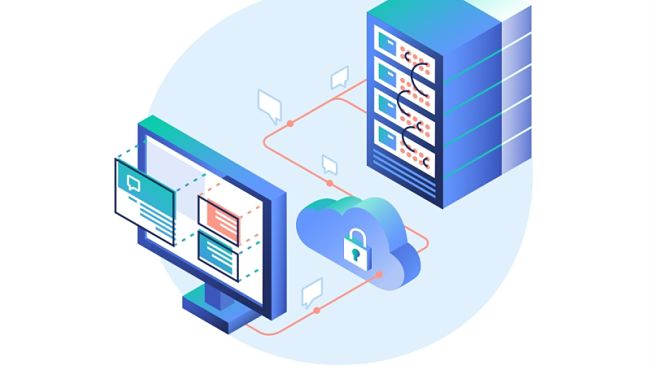In today’s world of advanced civilizational dependence on technology, one can barely make the case that today’s society, although declaring to respect and cherish individual freedoms, gives any value to one of the essential human needs- privacy.
Individual dignity, integrity, personal autonomy, and independence are one’s essence as a human being, and these values lay the grounds of what humans conceptualize as privacy.
“They who can give up essential liberty to obtain a little temporary safety deserve neither liberty nor safety”- Benjamin Franklin
I hope we’re on the same page.
Moreover, many theorists have historically argued different philosophical positions concerning privacy, some defining it as a sphere separate from government, some as forbidden knowledge, solitude or restricted access. The concepts and definitions of privacy may vary, but nevertheless, most thinkers view privacy as something valuable and meaningful.
The right to be free from the intrusion of others is by nature erga omnes. This means one man’s right to privacy is another man’s obligation to respect it. The exact boundaries of one’s right to privacy are a complicated matter, and we have no illusion that privacy can be a double-edged sword.
The right of privacy can serve as a pretext under which one can hide their perverse, dangerous and criminal intentions and activities. This argument is often used by governments to suppress us to massive surveillance and control, all in the name of safety.
However, privacy is a necessary component of the ability to think and act freely, and intimate financial matters fall within this scope. Today, monies are means of self-expression. The way you use them tells more about you than the world would think. Your sexual, political and ideological preferences can be extrapolated from your financial information.
And you’d be thinking, what’s the big deal? I have nothing to hide.
“Arguing that you don't care about the right to privacy because you have nothing to hide is no different than saying you don't care about free speech because you have nothing to say”- Edward Snowden
He couldn’t have said it any better. More often than not people make these sorts of arguments. You hear them say all sorts of ridiculous things: “I have nothing to hide because I’m a law-abiding citizen,” or “Who are you trying to hide from?” But then if you asked them to give you their unlocked phone or password to their Facebook account, or you ask them a question about how much money they owe, all of a sudden, they turn quiet.
Just swap the “I have nothing to hide” with “I’m willing to be fully transparent with all of my personal information” and think about it, long and hard.
Are you, indeed, willing to do this?
Blockchains and anonymity
I hope to establish a relationship with blockchain and privacy here.
To begin with, a blockchain is a continuously growing list of records, called blocks, which are linked together and secured using cryptography. The first time the world heard about blockchain technology was with the introduction of Bitcoin, a pseudonymous cryptocurrency making the headlines for the first time as “Dark web” money.
Indeed, Bitcoin was the “official” currency of Silk Road, an underground marketplace for all sorts of illegal goods and services incorporated on the darknet. Back then the technology was new to everybody, and you could rarely find an expert that truly understood it. People often misconceived pseudo-anonymous for anonymous just because wallet addresses aren’t related to actual IDs.
But nothing could be further from the truth.
The blockchain ledger is public and fully transparent. Everyone owning a copy of the ledger can search it and trace all the transactions made by everyone on the network back to the very beginning of the cryptocurrency protocol. There’s no doubt that transparency can be a good thing, but sometimes people want to hide their transactions for various reasons.
Imagine you’re a business that receives a payment from a supplier. That supplier will be able to search the blockchain and see how much money your business has and how, when and where you spend it. They can further use this commercially sensitive information to leverage it against you, and greatly diminish your position in future negotiations.
In the “early days” of Bitcoin, the more tech-savvy users that wanted to remain anonymous on the network used all sorts of technological solutions to obfuscate the transaction information and, hopefully, make it impossible for anyone to identify them. Services like VPNs and Tor were a regular practice, but also people started using tumbling or mixing services to omit the possibility of being tracked by anyone.
However, several studies proved that all of these methods could be rendered useless through careful analysis of the blockchain by financially superior and technologically advanced agents. As time progressed, more and more people in the crypto community saw the need for simple, user-friendly services that guaranteed anonymity as a default option.
For instance, dark wallets, stealth addresses, DASH and other models were created with the intention of providing anonymous transactions to the profane cryptocurrency user. All of them have their merits, but none of them managed quite to pull it off.
Right now, the only genuinely private cryptocurrency is not Bitcoin, but Monero. The best part is that it’s open-source, secure and untraceable. It’s the closest thing to completely anonymous internet money.
Brace yourselves and get ready to unravel the dark mysteries of cryptocurrency and watch as the knight in shining armour comes to the rescue.
Introducing Monero

The Origins
Monero started in 2014 as a grassroots project when it initially forked out of the Bytecoin blockchain in what was initially called Bitmonero and later rebranded to Monero which means “coin” in Esperanto.
The beautiful thing about Monero is that it’s developed in a truly open and meritocratic process. The project is a result of a huge team; 7 core developers, more than 30 regular developers and above 240 coders who have contributed from all over the world.
Monero’s Research Lab, Core Development Team and Community Developers are constantly pushing the frontier of what is possible with cryptocurrency privacy and security.
The community revolving the Monero coin is active, engaging, and very welcoming of newcomers interested in joining the “fellowship.” They’re constantly asking and answering questions on Reddit, spreading the word and philosophy of private cryptocurrencies.
According to the official website, Monero (XMR) is defined as “A secure, private, decentralized and untraceable cryptocurrency. It is open-source and accessible to all. With Monero, you are your own bank. Only you control and are responsible for your funds. Your accounts and transactions are kept private from prying eyes.”
Welcome to the new age of cryptocurrency!
Monetary characteristics
According to the Monero development team, the ideal “money on the internet” should fulfill three requirements: it should be electronic, decentralized and private. The project achieves these three requirements through four distinct features that set Monero apart from other decentralized cryptocurrencies on the market.
Before we delve deeper into these features let’s briefly explain how does a truly anonymous cryptocurrency solve the double spending problem?
Double spending problem
One major issue in the cryptocurrency world is “double spending”.
Double spending a coin basically means that the same coin was spent on more than one transaction. This issue is resolved with the help of the miners, whose role on the blockchain is to verify and confirm transactions in blocks. Once the block containing the transaction where that coin was originally spent is verified, any subsequent transactions using the same coin will be deemed invalid by the miners, thus preventing the same coin to be spent more than once.
But in order for this solution to work both the sender and the inputs of the transaction need to be available to the miners, and, as we will explain in greater detail later on, all of that information is hidden when using Monero. So how does Monero address double spending?
The answer is- a more clever use of cryptography.
Each Monero transaction generates a key image. If a single key image is detected more than once on the blockchain, it’s seen as a double-spend transaction and is therefore labeled invalid in all attempted transactions following the (first) original one, which was previously identified and verified by the miners because it hadn’t appeared before.
This is a crucial way in which Monero differentiates from the other cryptocurrencies, but, in order to understand all of it better, let’s take a look at the basics of Monero and work our way through to the more complicated stuff.
-
Monero is secure

Your money is yours, and you are your own bank. As a decentralized cryptocurrency, the Monero protocol uses distributed consensus algorithms to validate and clear transactions. This means that there’s no need for third trusted parties such as banks and clearinghouses to verify transactions.
Of course, this also means that there is no backup and no room for error, as there’s no one you can call to reverse a transaction sent to the wrong address or recover your funds if you lose your private keys. When dealing with decentralized cryptocurrencies, you have potential to be your worst enemy.
Monero is private and untraceable

“Monero uses ring signatures, ring confidential transactions, and stealth addresses to obfuscate the origins, amounts, and destinations of all transactions. Monero provides all the benefits of a decentralized cryptocurrency, without any of the typical privacy concessions.”
Privacy is the key feature of Monero, and in contrast to other cryptocurrencies that claim to be private and semi-private such as Zcash, DASH and others, Monero’s privacy is “default mode.” This means that rather than choosing to use private mode, you may choose to disclose some of your transaction information occasionally.
Monero states the following: “Sending and receiving addresses as well as transacted amounts are obfuscated by default. Transactions on the Monero blockchain cannot be linked to a particular user or real-world identity.”
Monero is fungible

Fungibility means that two units of a currency can be mutually substituted and the substituted currency is equal to another unit of the same size. For example, two $10 bills can be exchanged and they are functionally identical to any other $10 bill in circulation (although $10 bills have unique ID numbers and are therefore not completely fungible).
Gold is probably a closer example of true fungibility, where any 1 oz. of gold of any grade is of equal worth as another 1 oz. of gold of the same grade. Monero is fungible due to the nature of the currency which provides no way to link transactions together nor trace the history of any particular XMR. 1 XMR is functionally identical to any other 1 XMR.
So, that’s about the main features of Monero. Now, let’s dive deeper into the technical parts. Buckle up your seats!
Technical characteristics
From a technical standpoint, there are several core differences between the Monero protocol and cryptocurrencies that are derivatives of the Bitcoin protocol.
The first key difference is the consensus algorithm. Monero uses the CryptoNight (64-bit CPU-only) PoW hash algorithm based on CryptoNote protocol which differs from the SHA-256 based PoW protocol used by most of Bitcoin derived cryptocurrencies.
The second key distinction is the fact that Monero is designed to be ASIC resistant, which means it can be mined somewhat efficiently on a consumer grade hardware. This feature aims to supplement an additional layer of decentralization to the mining process.
Cryptocurrencies with ASIC compatible consensus algorithms tend to centralize the mining power over time. To be fair, this idea sounds reasonable in theory but in reality, things never go as expected. In application, Monero miners tend to group up into mining pools to maximize the profitability of mining, creating a more centralized environment and creating and fueling the theoretical possibility of a 51% attack if one or few mining pools get big enough.
Nevertheless, Cryptonight creates a fairer and more decentralized currency system. The algorithm is built to be CPU and GPU friendly, and it requires 2 MB of fast memory to work.
The third differentiation is Monero’s solution to the scalability problem. When Bitcoin was designed, it was never expected to reach this magnitude of adoption, and because of the many layers of consensus required to make a change to the network, Bitcoin is now facing scalability issues.
Bitcoin’s block size is pre-determined to 1 MB which clogs the network and results in slow on-blockchain transactions and high fees. The community “resolved” this problem by forking the original Bitcoin into a new cryptocurrency called Bitcoin Cash with 8 MB block size but, in essence, nothing changed for the “original” Bitcoin protocol.
Monero, however, employs something called dynamic scalability. Fundamentally, this means that the blocks of transactions added to the Monero blockchain have no “pre-set” size limit. To prevent clogging the network with disproportionately huge blocks by ill-disposed miners, the protocol applies a clever solution:
First, the network measures the median size of the last 100 blocks which is called M100. Let’s say, for simplicity’s sake that M100 = 10. Now assume the miners mined a new block and it has a particular size which is called “NBS” or New Block Size. If NBS is bigger than M100, then the block reward gets reduced in quadratic dependency of how much NBS exceeds M100.
This means that if a miner node tries to add a block with NBS = 15 (50% bigger than M100), it will be penalized with 25% smaller block reward. This creates a sufficient incentive for all miners to create blocks approximately the same size relative to the rest of the blocks on the blockchain.
All is fair in the kingdom of Monero.
Monero account details
In the Monero ecosystem the terms “monero account” and “monero wallet” are considered to be synonymous. However, it’s worth mentioning that the Monero development team prefers the term “Monero account”.
A monero account contains all of the Monero transactions you have sent and received, and all of the information necessary to send and receive Monero. Think of it as the bank account equivalent in the cryptocurrency world. With one huge distinction though- in the case of Monero accounts the account is private, you are the sole owner of your account, and you are the only one who can access it.
Your account balance is a sum of all the Monero you’ve received minus the Monero you’ve sent or “spent.” Finally, some simple math.
Because your account is private and entirely under your control, you need to practice sound security. The first time you create a Monero account, you will be given something called a “mnemonic seed.” A mnemonic seed is a 13 or 25-word phrase used to backup a monero account, available in a number of languages.
This 25-word phrase (13 words in the case of MyMonero) has all the information needed to view and spend funds from a Monero account. This mnemonic seed is essentially your “private spend key” (think of it as your password to access your funds) represented in understandable human language instead of a 256-bit integer. This mnemonic seed is the ONLY thing you can backup your account with so make sure you take great care of it.
Be warned: if you lose it, your Monero funds are gone forever. If someone gets to it, your account is compromised, and there’s no one to help you. If you own significant amounts of Monero, it’s a good idea to write down your mnemonic seed on a piece of paper, make a copy of it and store it in a safety deposit box. You can also just remember it and use your mind as the safest storage place, that is, if you trust your memory enough to store your funds on it.
Monero address
Monero relies heavily on a cryptography principle known as public/private key cryptography or asymmetric cryptography.
In order for Monero to maintain privacy, your account is based on two sets of keys: a spend key and a view key.
The spend key key-pair is made of a public spend key and private spend key. The private spend key is used to sign a key image when the owner wants to spend funds. The public spend key is used by the network to verify the signature of the key image and validate the transaction. The spend key key-pair, as the name suggests, is all about the sender, and it is the single key required to spend your Monero funds.
The view key key-pair is also made out of a public and a private view key. The public view key is used by the sender to generate a one-time stealth address to where the funds will be actually sent. The private view key is used by the owner of the account to scan the Monero blockchain to find the funds sent to his address.
The sharing of the public view key was initially intended to disclose the received transactions of the sender’s account, for whatever reason, but according to the Moneropedia “However, outgoing transactions cannot be reliably viewed as of June 2017. Therefore, the balance of a Monero address as shown via a view key should not relied upon.”
A raw Monero address is a set of 95 characters starting with a ‘4’. The Monero donation address, for instance, looks like this:
44AFFq5kSiGBoZ4NMDwYtN18obc8AemS33DBLWs3H7ot
Xft3XjrpDtQGv7SqSsaBYBb98uNbr2VBBEt7f2wfn3RVGQBEP3A
This set of characters is the only piece of information you need to disclose when you want to receive funds. The address is essentially made up out of public spend key (makes up the first part of the Monero address) and the public view key (makes up the second half of the Monero address.)
How Monero grants anonymity

Transactions made using Monero are private; they hide the sender, the recipient, the amount of funds being transferred, as well as the information that there is a Monero transaction taking place at all. This is achieved by a couple of technologies, each responsible for granting anonymity to one of the four key aspects of a Monero transaction:
The sender
The sender’s privacy in a Monero transaction is maintained using Ring Signatures.
To understand what a ring signature is and how it’s made, we will explain the basics of it with an example. Suppose you want to make a sizeable donation to a charity, but you don’t want anyone to know that it was you.
So, you merge your signature on the check with the signatures of 4 other people, thereby making sure that when people look at that unique signature on the check, they can’t be certain which one of the 5 of you originally made the donation.
This, in essence, is what ring signatures are all about. The sender’s anonymity is guaranteed by hiding the so-called “spent inputs” (the funds in the sender’s account that are being spent) in a transaction among several other inputs, so that no one can know for sure which one of them is the source of the money for the given transaction. So, how does the ring signature mechanism work in practice?
The first thing to do in order to create and utilize a ring signature is to determine a “ring size”. The ring size addresses the total number of signers in a ring signature. In the example we made above the ring size was 5, meaning that in addition to the “real” output there are 4 more foreign outputs, also known as decoys. The bigger the ring size (or, the bigger the number of decoys), the lower the chances that a transaction will be traced back to the actual sender; a ring size of 5 means that there’s an equal chance of 1/5 that any one of the signers is the actual signer of the transaction.
However, larger ring sizes mean the overall transaction is bigger, hence the fees for carrying out the transaction are higher.
Decoys are past transaction outputs (also known as public keys) taken from the blockchain, while the actual sender is a one-time spend key that matches an output being sent from the sender’s wallet. These 5 outputs (the actual sender’s one-time spend key + 4 decoy outputs) create the input for this new transaction where each output is just as likely to be the sender as the other outputs, thus the anonymity of the sender is guaranteed.
The recipient
As we mentioned above, one-time spend keys are public keys that match an output being sent from a sender’s wallet. They are random addresses created by the sender on behalf of the recipient and are unique to the transaction.
Each Monero account is associated with a private spend key, a private view key, and a public address. The public address consists of a public spend key and a public view key, and is used for receiving payments. There’s only one public address for each account, however, all incoming payments are sent to unique one-time addresses (created by the sender) on the blockchain that cannot be linked back to the recipient’s public address nor to any other transactions’ addresses.
These one-time addresses are called stealth addresses, and they make sure that the sender and the receiver are the only two people who can determine the source and the destination of the payment.
In other words, a stealth address is a randomly generated public key that indicates who can spend the output of a given transaction. It consists of the recipient’s public spend key, public view key, and some randomly generated data, all combined in such a way that no one can link the address to the recipient’s wallet just by looking at the blockchain.
Once this address is generated and the transaction is executed, the output of the transaction becomes publicly available on the blockchain ledger. Then, the recipient scans the blockchain with his private view key to locate the output designated for him. When the output is detected and retrieved by the recipient’s wallet, he’s able to calculate a one-time private key that corresponds with this one-time public key (the stealth address) and henceforth spend the funds using his private spend key.
This whole process relies on the stealth address and the fact that it cannot be publicly linked to the recipient’s wallet, thus assuring complete anonymity.
The maxtransacted amount
Now that we have explained how Monero keeps the sender and the receiver anonymous, it’s time to explain how the transactions themselves are kept confidential through something called RingCT.
After September 2017, the use of the RingCT protocol became mandatory for all Monero users. The RingCT protocol is based on the groundbreaking work of Gregory Maxwell. RingCT is basically a protocol that prevents privacy leaks by hiding transaction amounts in the blockchain.
As the Monero team put it themselves “Today with RingCT, newly created Monero firstly resides in outputs that have visible amounts. When new Monero is transferred for the first time, RingCT outputs with masked amounts are generated. As a result, transactions no longer need to be broken down into different denominations.
This means that a wallet is free to pick ring members from any RingCT outputs, which significantly improves privacy. It should be noted that Monero ring signatures can’t include both pre-RingCT outputs and masked RingCT outputs in a single ring, so – like newly created Monero – a pre-RingCT output must first be converted to a RingCT output before it can be included in a ring signature with other RingCT outputs.”
IP addresses and geographical location
Kovri is a free, decentralized anonymity technology based on I2P’s open specifications. Currently, Kovri is still in development, and is not yet integrated with Monero. The idea behind the project is to create a protocol that hides the connections between the user of a Monero account or a Monero miner with their IP address and their geographical location. To do this, Kovri uses encryption and advanced routing techniques to create a private overlay network across the Internet. It is based on The Invisible Internet Project (I2P), an open source project that enables censorship resistant peer to peer communication.
As explained by the Monero team “Kovri tunnels traffic through the I2P network utilizing “garlic encryption” and “garlic routing”. Information travels within a private overlay-network by way of messages, which are encrypted in layers each time the message is passed along to peers in the network, similar to a Matryoshka doll.
For each inner doll there is a lock and public key to the next doll. Peers in the network are not able to read the contents of the message being relayed, so information sent from the sender to its destination (and vice-versa) are secured. The only information visible to peers is the instruction for sending messages to the next peer.
To achieve greater privacy at a slight cost to performance, users are able to connect to several peers. Essentially, Kovri covers an application’s Internet traffic to make it anonymous within the network. Given this characteristic, Kovri is a great solution for anonymously communicating over IRC, email, or accessing hidden services.”
The value of Monero and why you should buy it
After reading this quite exhausting guide, you might initially get the impression that Monero is the world’s most anonymous form of money. But you would be dead wrong. The world most anonymous form of money is cash.
According to some estimates, the amount of money laundered globally in one year is 2 – 5% of the global GDP, or $800 billion – $2 trillion in current US dollars. And guess what? Most of it is cash.
Governments around the world already know this, and they’ve been silently waging war on cash for quite some time now. The European Central Bank has announced that it will be eliminating the 500 Euro banknote. Further, in an attempt to fight corruption, India declared that it would no longer consider the 500 and 1000 rupee notes as legal tender.
One Google search on the “war on cash” is enough to make a point. Governments want to have full, unobstructed control over the money flow. The power to “push a button” and freeze all the assets in your bank account is terrifying, and this dystopian scenario is coming faster than you’d think.
Therefore, when we talk about the value of an anonymous cryptocurrency, we’re not merely talking about the price of it. Sure, Monero went from 13 dollars to more than $350 in just one year, and cryptocurrency speculators made a lot of money, but is this really all there is to it?
Some conspiracy theorists say that cryptocurrencies have no intrinsic value, meaning, they’re not backed up by anything. But that’s just not accurate; decentralized cryptocurrencies are a form of commodity-currency due to the method used for their issuance.
On the contrary, some argue that their value comes from what is known as “the network effect.” This basically means that the value of certain goods and services (I.e., Monero) rises proportional to the number of people using it.
For instance, if only 1000 people used the fax machine or Facebook, it wouldn’t have any value. And this is correct, as more and more people start using Monero, the value (and the price) of the currency rises.
But all this doesn’t ultimately answer the question, why you should use it? Because secrets have value. In times of war, secrets may be the difference between life and death. Secrets are an integral part of your sovereignty as a human being. You give up your secrets; you lose your sovereignty.
Are Secrecy & Security the Factors of Success?
Corporate and government crackdowns on cryptocurrencies that cannot offer their users privacy and fungibility will push people to cryptocurrencies that provide protection in that respect. Only Monero can provide these commodities at the time being, and it seems like that won’t be changing any time soon.
So, it’s only natural for people to gravitate towards the safest, most independent and most anonymous of platforms in order to assure their financial independence. The whole idea of cryptocurrencies was to offer an alternative method of making transactions without the overarching, penalizing, taxing governments and banks monitoring you every step of the way.
While they were off to a good start, many cryptocurrencies show potential problems when it comes to the privacy of their users. Anonymity on the internet is not a simple matter of hiding your first and last name; to achieve it requires a plethora of safety measures and mechanisms, many of which are simply too complex for the everyday internet users.
Monero takes online privacy to the next level and assures that all transactions are completely anonymous and untraceable to either party.
donating = helping new comers
If you find any value and stimulation here, please consider supporting our labor of love by making a donation.We’re trying to keep the website independent and ad-free, and this will support our work and help us create more valuable content aimed at new comers, so they have the chance to educate themselves a little instead of going straight in, which can save them a lot of time, money, and potentially save them from being scammed.
XMR: 4GdoN7NCTi8a5gZug7PrwZNKjvHFmKeV11L6pNJPgj5QNEHsN6eeX3Da
AQFwZ1ufD4LYCZKArktt113W7QjWvQ7CWAmfmuFMhKPQG9qPeK
Feature image by Vy Tat. Other image sources: 1, 2, 3, 5